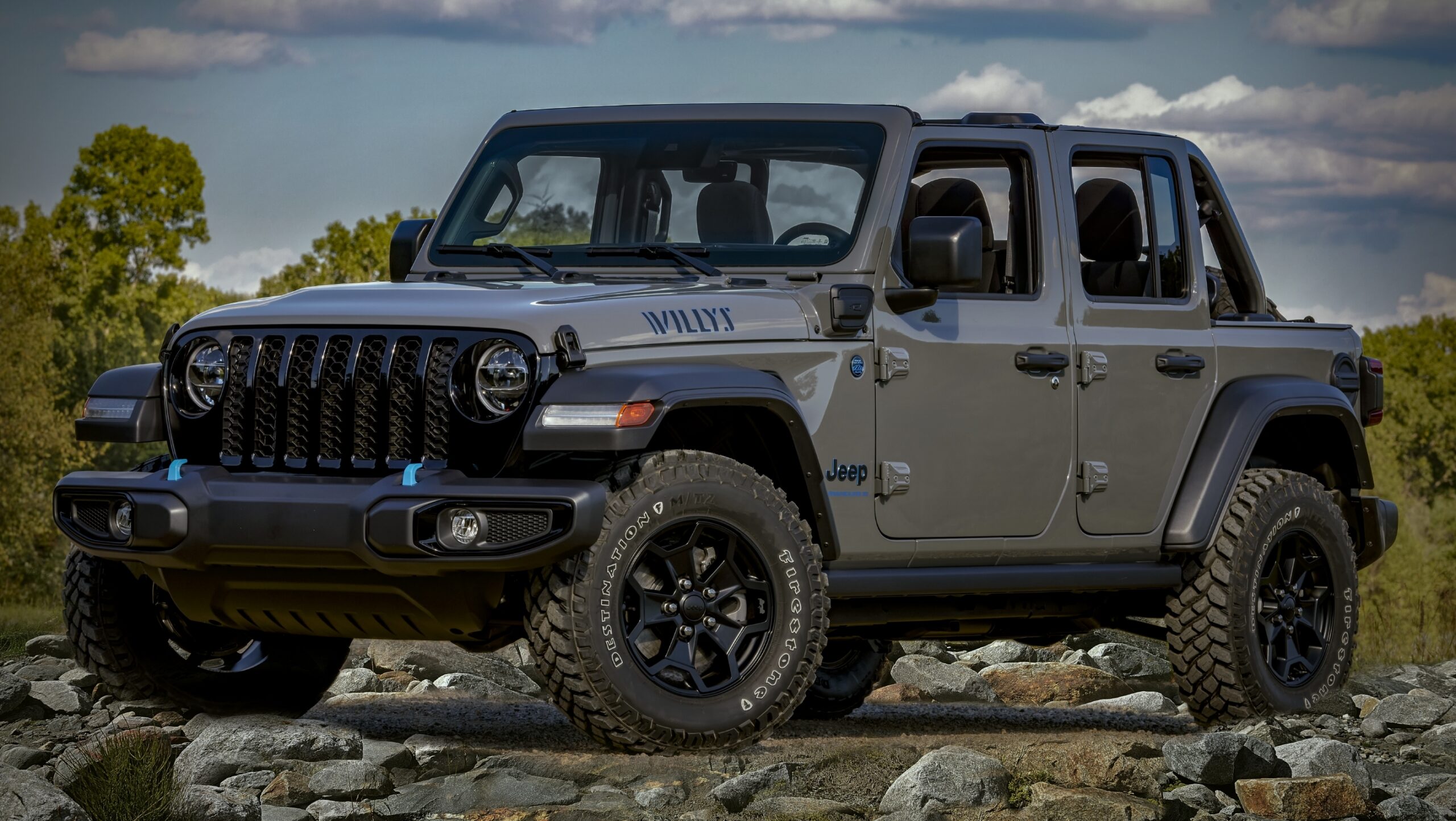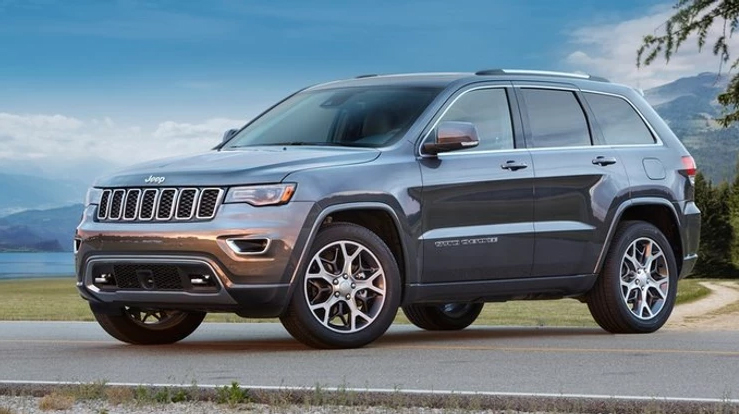Jeep Diesel Liberty For Sale: Your Comprehensive Guide to a Unique Off-Road Diesel SUV
Jeep Diesel Liberty For Sale: Your Comprehensive Guide to a Unique Off-Road Diesel SUV jeeps.truckstrend.com
The market for used vehicles is vast and varied, but every so often, a particular model stands out for its unique blend of attributes, becoming a cult classic for those in the know. Among these, the Jeep Diesel Liberty (specifically the CRD, or Common Rail Diesel, variant) holds a special place. Produced for a limited run in the United States from 2005 to 2006, this compact SUV combined the legendary off-road prowess of a Jeep with the efficiency and robust torque of a diesel engine.
For many, the idea of a Jeep is synonymous with gasoline-powered engines and robust, albeit sometimes thirsty, performance. The Diesel Liberty shattered this mold, offering a distinctive alternative that appealed to off-road enthusiasts, towing aficionados, and those simply seeking better fuel economy in a capable SUV. Finding a Jeep Diesel Liberty for sale today means uncovering a vehicle that, despite its age, continues to deliver a compelling proposition for the right owner. This comprehensive guide will delve into everything you need to know about purchasing and owning one of these unique machines.
Jeep Diesel Liberty For Sale: Your Comprehensive Guide to a Unique Off-Road Diesel SUV
I. Understanding the Jeep Liberty CRD: A Brief History and Appeal
The Jeep Liberty (KJ generation, 2002-2007) was Jeep’s answer to a growing demand for smaller, more car-like SUVs, replacing the iconic Cherokee (XJ). While most Liberties were sold with gasoline engines (2.4L I4 or 3.7L V6), the 2005 and 2006 model years saw the introduction of a diesel option in the North American market: the Liberty CRD.
At its heart was the VM Motori 2.8-liter DOHC 4-cylinder turbodiesel engine, paired exclusively with a 545RFE five-speed automatic transmission. This engine was a game-changer for the Liberty, producing a healthy 160 horsepower but, more importantly, a robust 295 lb-ft of torque at a low 1,800 RPM. This torque figure significantly surpassed that of its gasoline counterparts, making it an excellent choice for towing, climbing, and general low-speed off-roading.
The appeal of the Diesel Liberty stems from several factors:
- Fuel Efficiency: Significantly better than the gasoline V6, offering a range that could rival some smaller sedans.
- Torque: Exceptional pulling power for its size, making it a capable tow vehicle.
- Durability: Diesel engines are known for their longevity, and with proper maintenance, the VM Motori engine can last for hundreds of thousands of miles.
- Uniqueness: It’s a niche vehicle, offering a combination of features not commonly found in other compact SUVs.
- Off-Road Capability: It retained Jeep’s commitment to off-road prowess, available with the Selec-Trac full-time 4WD system, solid axles, and decent ground clearance.

II. Benefits of Owning a Diesel Liberty
Choosing a Jeep Diesel Liberty for sale isn’t just about finding a unique vehicle; it’s about embracing a specific set of advantages that cater to particular needs.
- Superior Fuel Economy: This is arguably the primary draw. While official EPA ratings might seem modest by today’s standards (around 20 MPG city / 25 MPG highway), real-world owners often report higher figures, especially on the highway, making it a more economical choice for daily driving and long trips compared to its gasoline brethren.
- Impressive Torque and Towing Capacity: The 295 lb-ft of torque available at low RPMs makes the Diesel Liberty an excellent choice for towing. With a properly equipped tow package, it can handle up to 5,000 pounds, making it suitable for small boats, utility trailers, or even smaller campers – a remarkable feat for a compact SUV.
- Long-Term Durability and Longevity: Diesel engines are inherently designed for heavier-duty cycles and longer lifespans. The VM Motori engine, if well-maintained, can easily exceed 200,000 or even 300,000 miles, offering years of reliable service.
- Robust Off-Road Performance: Despite its unibody construction (with integrated frame rails), the Liberty CRD is a true Jeep. Its torque-rich engine, combined with a capable 4×4 system and solid axles, allows it to confidently tackle trails, mud, and snow, making it a versatile adventure vehicle.
- Distinctive Driving Experience: The characteristic diesel clatter and the surge of low-end torque provide a different, more engaging driving feel than typical gasoline SUVs.
III. What to Look For When Buying a Used Jeep Diesel Liberty
Given that all Diesel Liberties are at least 18 years old, a thorough inspection is paramount. This section is a critical "how-to" guide for potential buyers.
- Engine Specifics (The Heart of the CRD):
- Timing Belt Service: This is the most crucial maintenance item. The timing belt on the VM Motori 2.8L CRD needs to be replaced every 100,000 miles or 5 years. If there’s no proof of this service, factor in the immediate cost (typically $1,000-$2,000) or walk away, as a failed belt means catastrophic engine damage.
- Turbocharger Condition: Listen for unusual whistling, whining, or grinding noises. Check for excessive smoke from the exhaust (blue indicates oil, black indicates rich fuel or injector issues). Look for oil leaks around the turbo housing.
- EGR System: The Exhaust Gas Recirculation (EGR) system is prone to clogging with soot, leading to reduced performance and potential engine codes. Ask if it’s been cleaned or if any modifications (like an EGR delete, legal status varies by region) have been performed.
- Injector Leaks: Check around the injectors for signs of diesel leaks or "black death" (hardened carbon deposits). A rough idle or excessive smoke could also indicate injector issues.
- Cooling System: Inspect the radiator for leaks, check coolant color (should be clear, not murky or rusty), and ensure the engine maintains proper operating temperature.
- Oil Cooler Lines: These are a known failure point. Look for signs of oil leaks near the engine block, especially on the passenger side.
- "Elephant Hose" Mod: Many owners modify the crankcase ventilation system (often called the "elephant hose" mod) to prevent oil mist from coating the turbocharger and intercooler. While not critical for initial purchase, it indicates a proactive owner.
- Transmission (545RFE Automatic):
- Check fluid color and smell (should be red, not brown or burnt).
- Test drive to ensure smooth shifts, no slipping, or harsh engagements.
- Drivetrain:
- Engage 4WD (2H, 4H Part-Time, 4H Full-Time, 4L) to ensure all modes work correctly. Listen for clunks or grinding noises.
- Check for excessive play in U-joints and driveshafts.
- Inspect differential fluid levels and look for leaks.
- Suspension & Steering:
- These vehicles are known for wearing out ball joints, tie rods, and control arm bushings. Check for play in the steering wheel and listen for clunking noises over bumps.
- Look for worn shock absorbers and springs.
- Rust:
- Thoroughly inspect the frame, rocker panels, floorboards, and suspension mounting points for rust, especially if the vehicle comes from a region that uses road salt.
- Electrical:
- Test all lights, power windows, locks, and dashboard warning lights. Ensure the check engine light is not illuminated (unless a known, minor issue is disclosed).
- Maintenance Records: Request detailed service records. A comprehensive history of oil changes (using correct diesel oil), fuel filter replacements, and critical services like the timing belt is a massive plus.
- Pre-Purchase Inspection (PPI): Always get a pre-purchase inspection from a trusted mechanic familiar with diesel engines, preferably one experienced with Jeep or VM Motori. This small investment can save you thousands down the line.
IV. Common Challenges and Solutions
While the Jeep Diesel Liberty offers many advantages, it’s not without its quirks and potential challenges, primarily due to its age and specialized nature.
- Parts Availability: Some specific CRD parts can be harder to source than common gasoline Liberty parts.
- Solution: Dedicated online vendors (like IDParts, SasquatchParts), owner forums (e.g., LostKJs.com, LibertyCRD.com) with parts diagrams and cross-references, and proactive maintenance to prevent failures.
- Specialized Mechanics: Not every general mechanic shop is equipped or knowledgeable enough to properly service a diesel engine, let alone a VM Motori CRD.
- Solution: Research and find a reputable diesel specialist or an independent Jeep mechanic with CRD experience in your area before you need major service.
- Emissions Equipment (EGR, CCV): The EGR system can clog, and the crankcase ventilation (CCV) system can cause oil mist buildup in the intake.
- Solution: Regular cleaning of the EGR valve and intake manifold. Many owners opt for the "elephant hose" mod or an oil catch can to mitigate CCV issues. Be aware of local emissions laws regarding modifications.
- Higher Maintenance Costs: While less frequent, certain diesel-specific maintenance items (e.g., fuel filters, specific diesel oils, timing belt) can be more expensive than gasoline equivalents.
- Solution: Factor these costs into your budget. Learning to perform basic maintenance yourself (oil changes, fuel filter replacements) can significantly reduce costs.
- "Fixer-Upper" Potential: Many Diesel Liberties for sale will be high-mileage examples that require immediate attention or ongoing repairs.
- Solution: Be realistic about the vehicle’s condition and budget for initial repairs. Don’t be afraid to walk away from a project that’s too far gone unless you enjoy extensive mechanical work.
V. Pricing Guide for Jeep Diesel Liberty For Sale
The price of a used Jeep Diesel Liberty can vary significantly based on condition, mileage, maintenance history, modifications, and geographical location. The table below provides a general estimate.
| Condition | Mileage Range (Miles) | Estimated Price Range (USD) | Key Considerations


